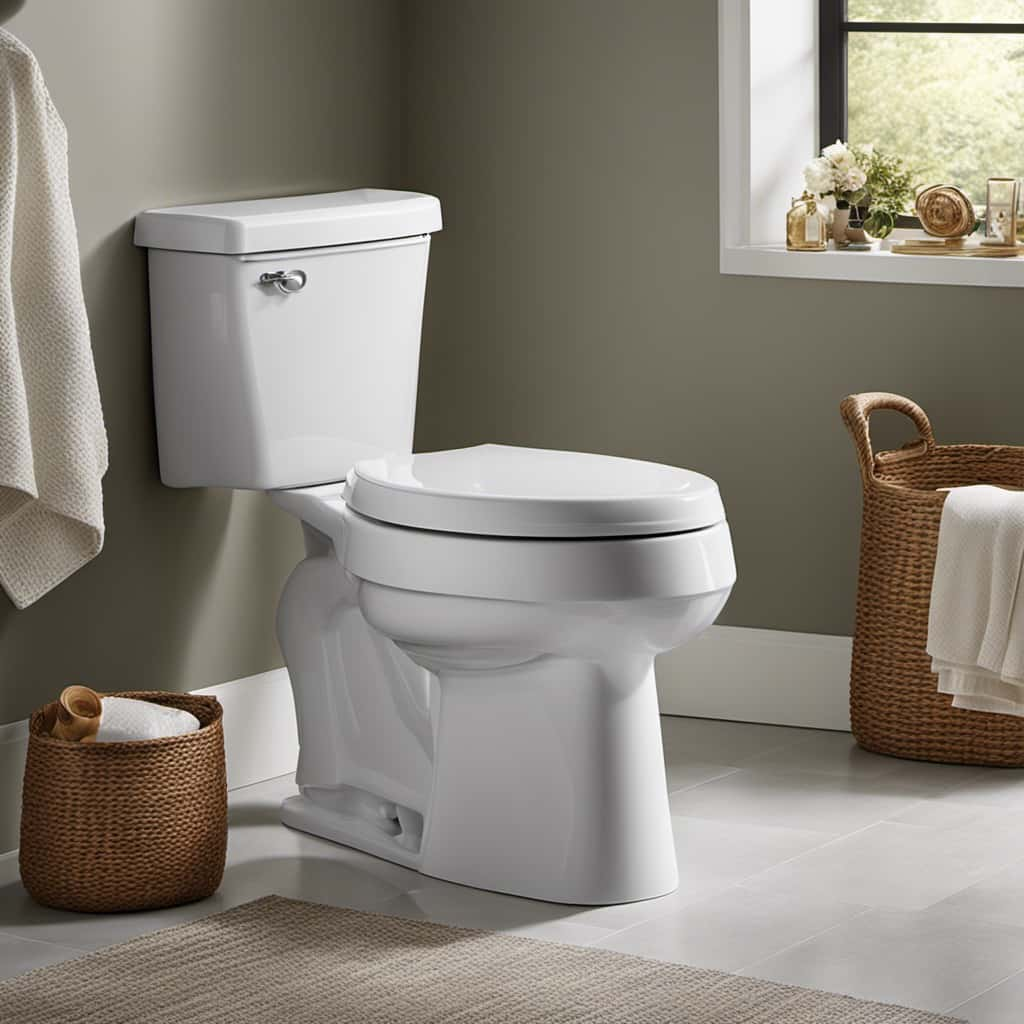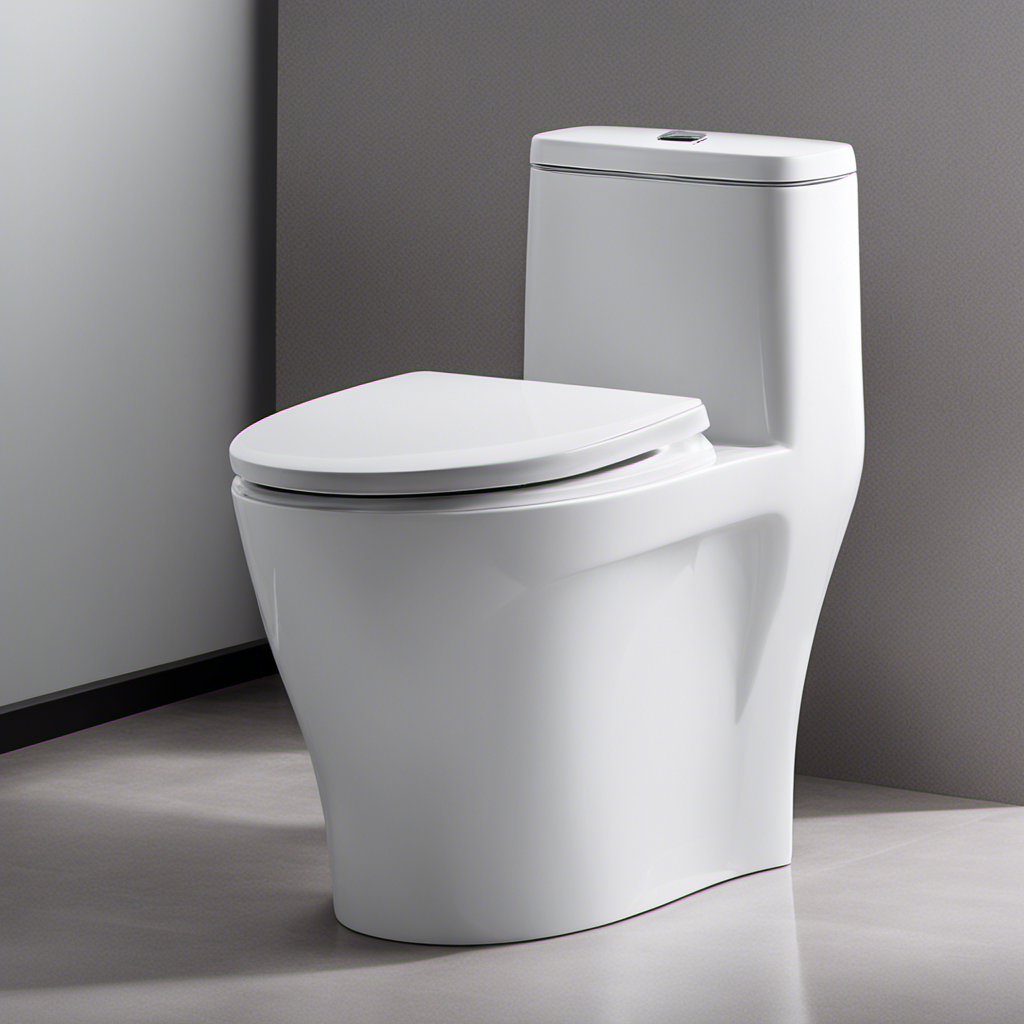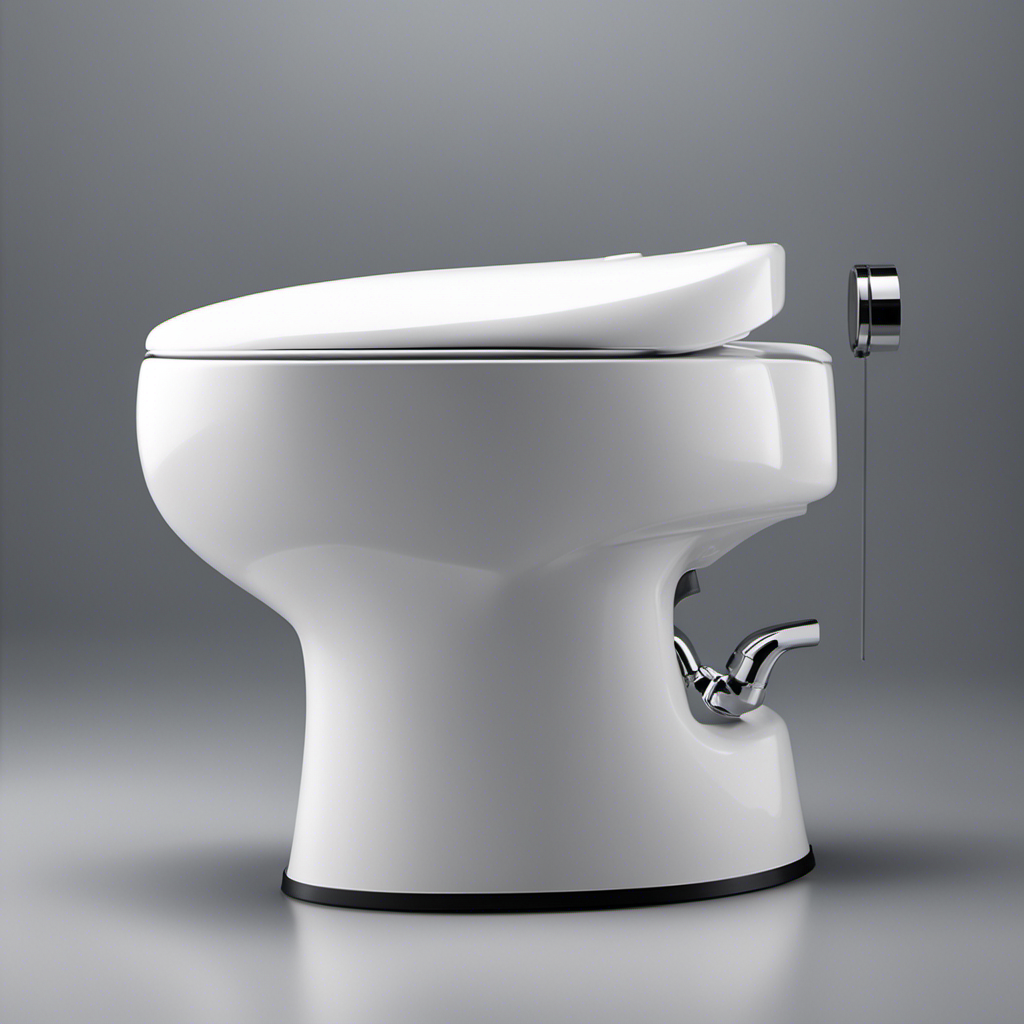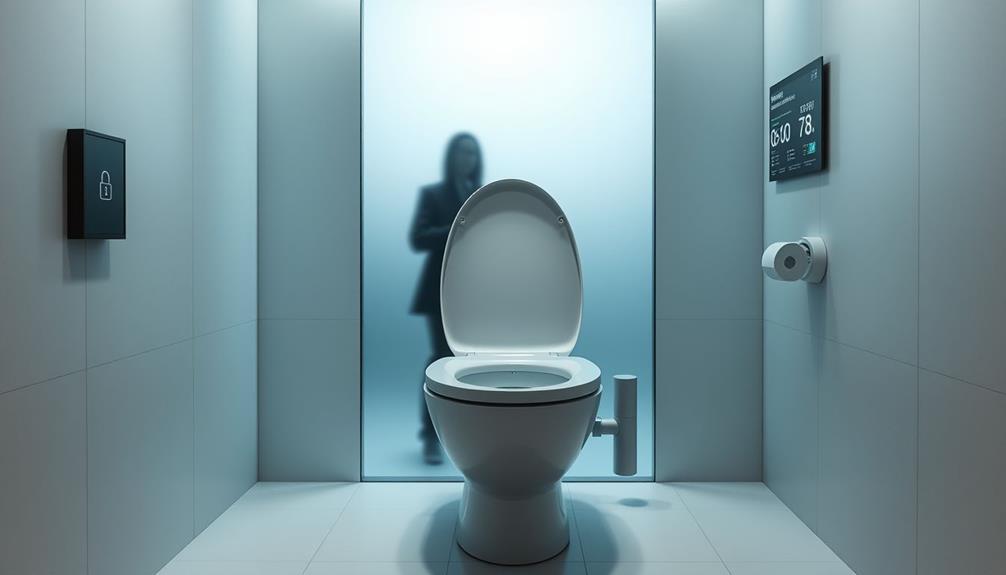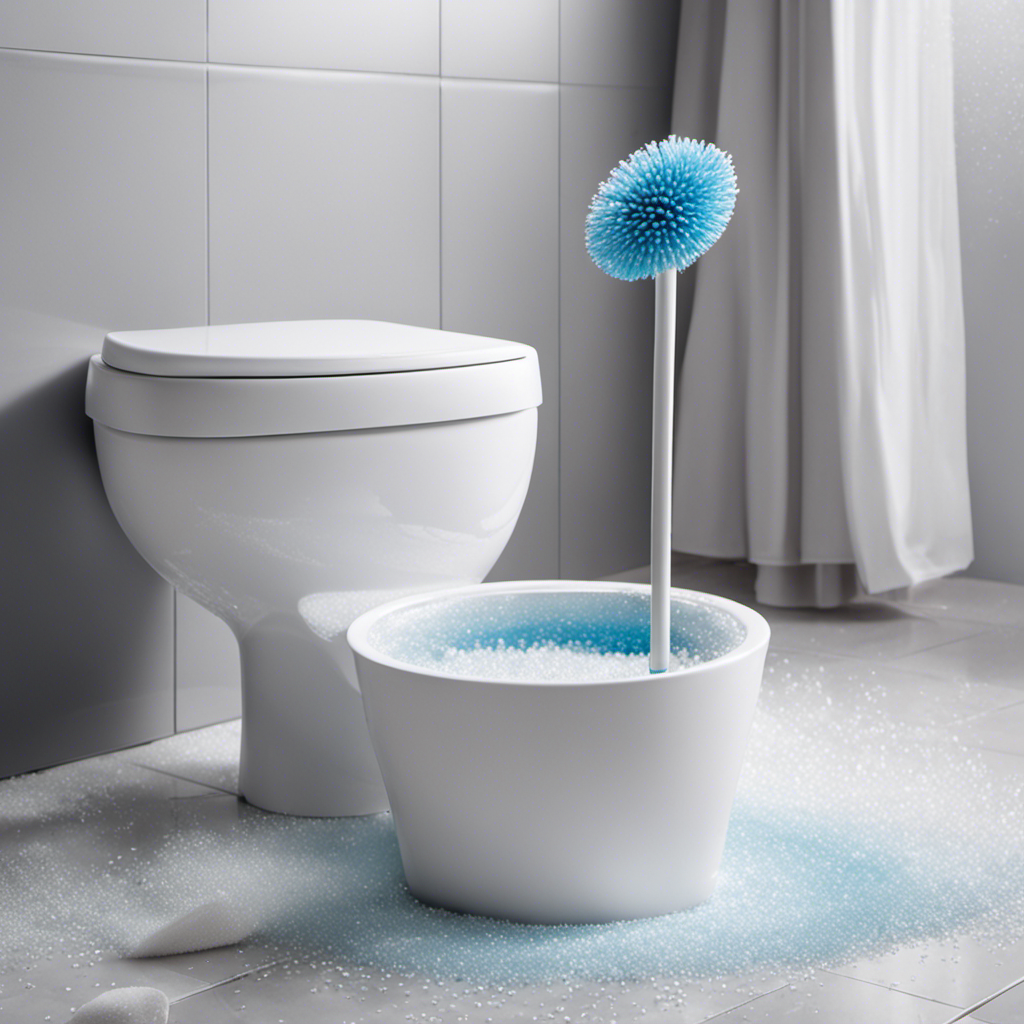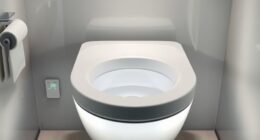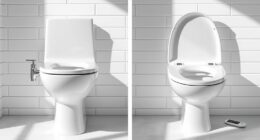Have you ever found yourself in a situation where your toilet won’t flush and you’re wondering if a bucket of water can do the trick? Well, we’re here to tell you that it can!
In this article, we will guide you through the steps of using a bucket of water to flush your toilet effectively. We’ll explain the concept, provide a list of necessary materials, and walk you through the process step by step.
So, let’s dive in and master this handy technique together!
Key Takeaways
- Pouring water directly into the toilet bowl can effectively flush the toilet.
- Using a bucket of water can significantly reduce water usage.
- Using a bucket of water is a viable solution for conserving water.
- By using a bucket of water instead of a full flush, gallons of water can be saved per flush.
Understanding the Concept
To fully comprehend the feasibility of using a bucket of water to flush a toilet, we need to delve into the intricacies of this concept. There are common misconceptions surrounding this method, which often lead to skepticism about its effectiveness. However, when executed properly, it can be a viable solution for conserving water.
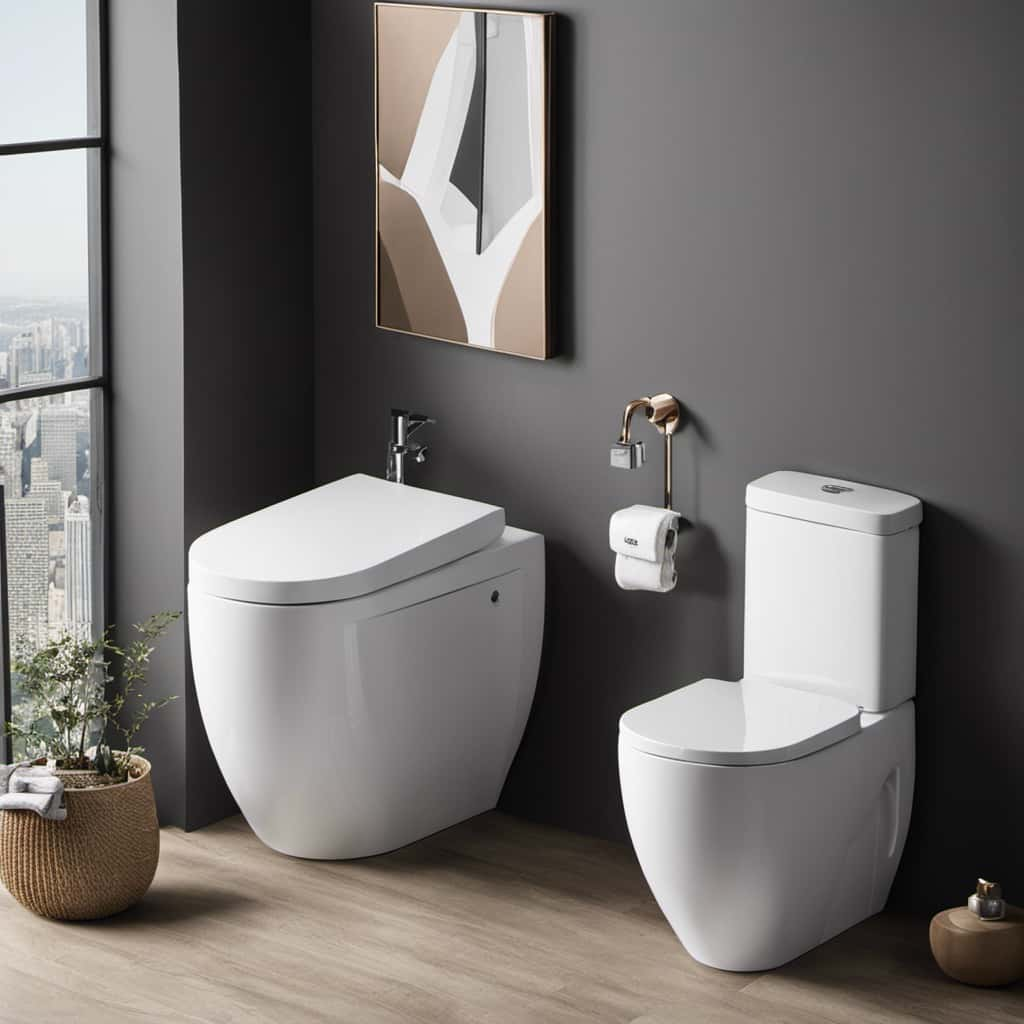
One common misconception is that using a bucket of water may not generate enough force to effectively flush the waste. This isn’t necessarily true. By pouring the water directly into the bowl from a higher position, you can create enough pressure to flush the toilet effectively.
Another important consideration is the water conservation implications of using a bucket to flush. This method can significantly reduce water usage, especially in areas where water scarcity is a concern. By using a bucket of water instead of a full flush, you can save gallons of water per flush.
Gathering the Necessary Materials
To gather the necessary materials for using a bucket of water to flush the toilet, we’ll need a sturdy bucket and a nearby water source. When selecting a bucket, it’s important to choose one that’s strong and leak-proof, as it will need to hold a substantial amount of water. A durable plastic or metal bucket should suffice.
As for the water source, it can be a sink, bathtub, or any other available water outlet. It’s essential to have a backup water source in case the main one isn’t accessible. Additionally, it’s recommended to keep a lid for the bucket to prevent spillage and maintain hygiene.
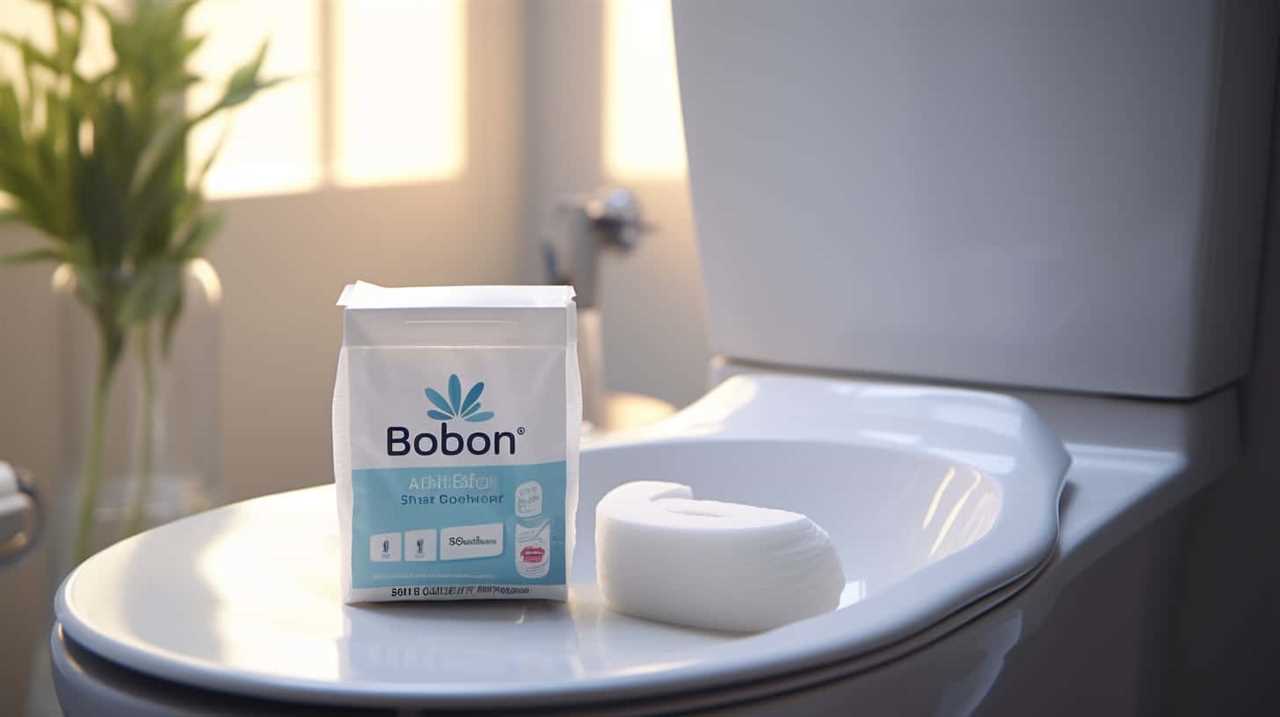
Preparing the Bucket of Water
We start by filling the bucket with water from a nearby source. It’s important to consider the size of the bucket when preparing it for flushing the toilet. A larger bucket will hold more water and allow for multiple flushes, whereas a smaller bucket may require multiple trips to refill. The water temperature is another factor to consider. Using cold water is typically sufficient for flushing purposes, but if the bucket is filled with warm or hot water, it can help dissolve waste more effectively.
Here are five key points to keep in mind when preparing the bucket of water:
- Choose an appropriate bucket size based on your needs.
- Fill the bucket with water from a nearby source.
- Consider using warm or hot water for better waste dissolution.
- Ensure the bucket is sturdy and leak-proof.
- Keep the bucket easily accessible for quick and convenient use.
Flushing the Toilet With the Bucket of Water
After preparing the bucket of water, we can now proceed to flush the toilet using it. Flushing the toilet with a bucket of water is an alternative method that promotes water conservation.
To begin, lift the toilet seat and carefully pour the bucket of water into the toilet bowl. Aim for the center of the bowl to ensure proper coverage. The force of the water should be strong enough to push waste down the drain. If necessary, repeat the process until the toilet is adequately flushed. Remember to pour the water slowly to prevent splashing.
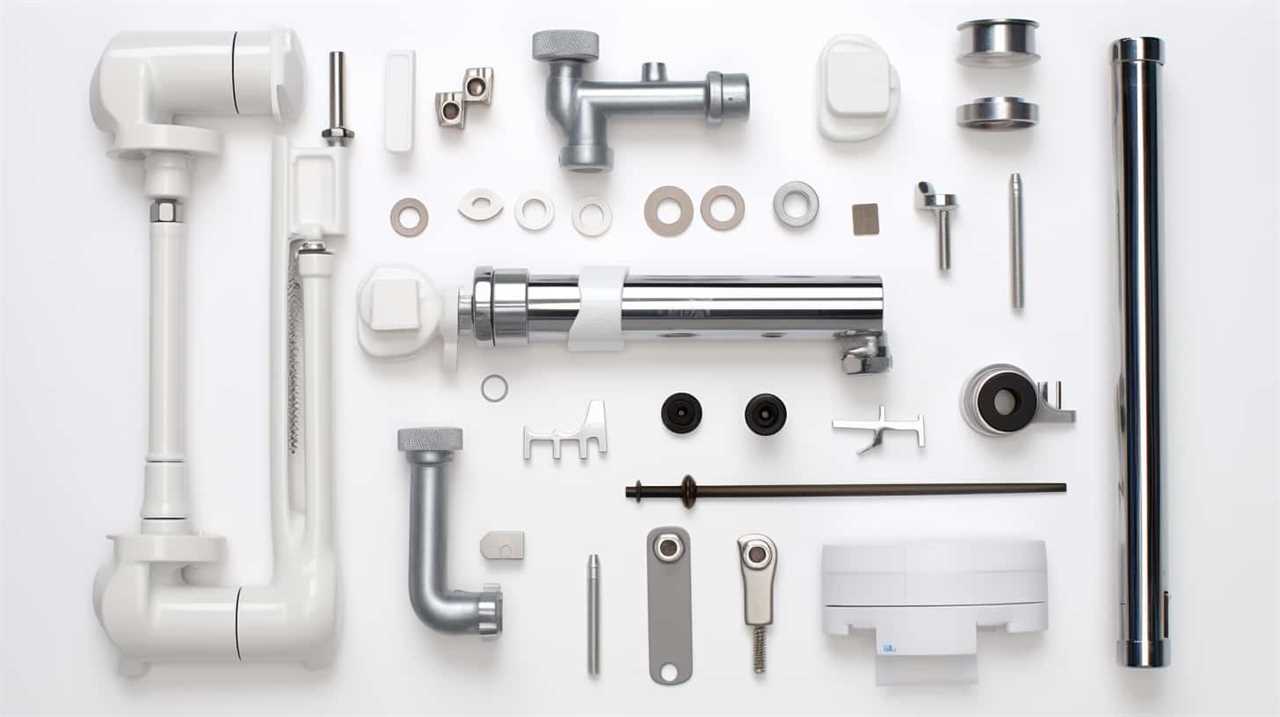
This method is especially useful during water shortages or when the toilet’s flush mechanism isn’t functioning properly. By utilizing alternative methods like this, we can contribute to water conservation efforts while still maintaining proper hygiene.
Evaluating the Pros and Cons
Considering the advantages and disadvantages of using a bucket of water to flush a toilet, we must carefully weigh the potential benefits against the potential drawbacks. Evaluating the effectiveness of this method can help us make an informed decision.
Here are some potential challenges and benefits to consider when evaluating the use of a bucket of water to flush a toilet:
- Advantages:
- Water conservation: Using a bucket of water allows you to control the amount of water used, potentially reducing water waste.
- Emergency situations: When the water supply is disrupted, a bucket of water can be a temporary solution to maintain hygiene.
- Cost-saving: Using a bucket of water eliminates the need for a functioning flush mechanism, saving on repair or replacement costs.
- Independence: This method allows you to be self-reliant, especially in areas with unreliable water supply.
- Eco-friendly: By reducing water usage, you contribute to environmental sustainability.
- Disadvantages:
- Inconvenience: Using a bucket of water requires manual labor and can be time-consuming.
- Hygiene concerns: Without proper sanitation measures, there’s a risk of contamination and spread of germs.
- Odor control: Flushing with a bucket may not be as effective in eliminating odor compared to a traditional flush mechanism.
- Aesthetic impact: The presence of a bucket may not be visually appealing in a bathroom setting.
- Potential damage: Improper handling or accidental spills while using a bucket can lead to water damage or slippery floors.
Carefully considering these pros and cons will help you decide whether using a bucket of water to flush a toilet is a suitable option for your specific circumstances.
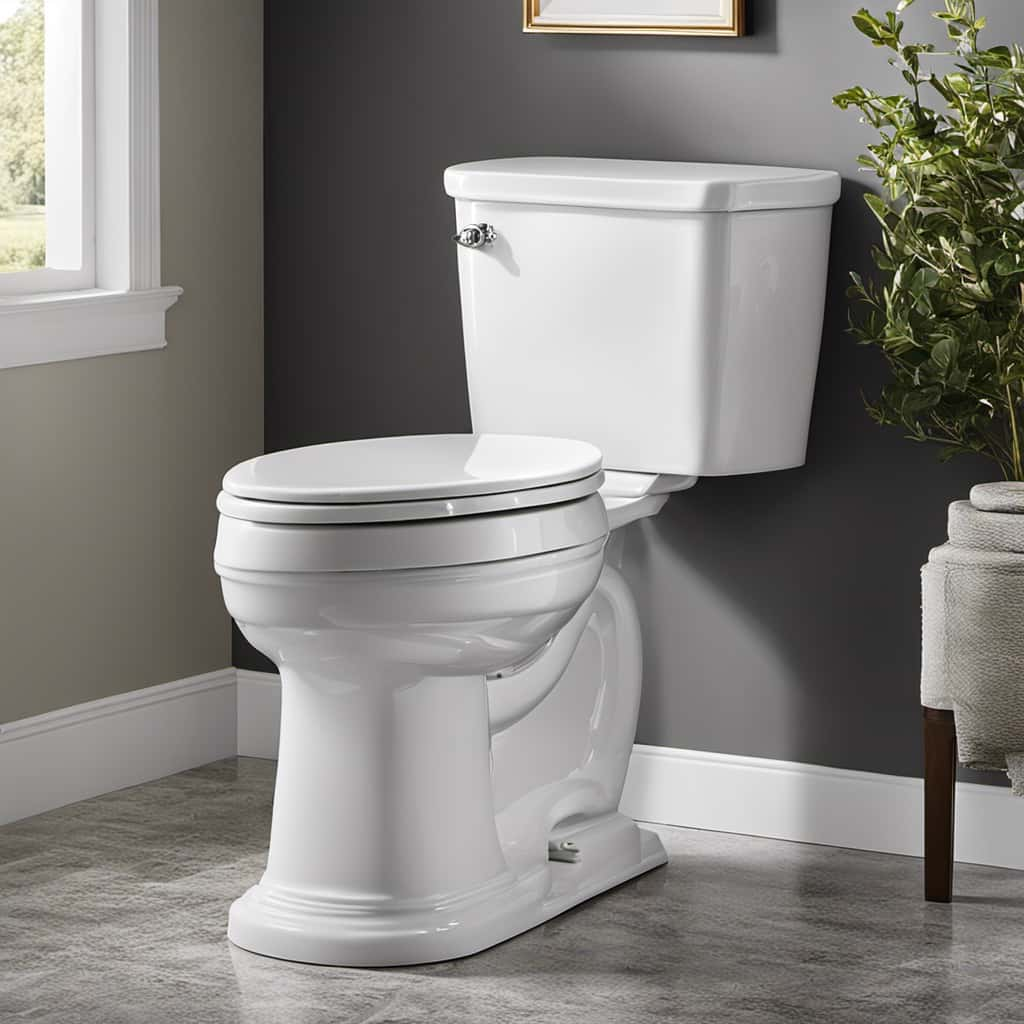
Frequently Asked Questions
How Much Water Should Be Poured Into the Bucket to Effectively Flush the Toilet?
To effectively flush a toilet using a bucket of water, pour enough water to create a strong force that pushes waste down the drain. Water saving techniques for flushing toilets include using a smaller bucket and alternate flushing methods.
Can Any Type of Bucket Be Used, or Are There Specific Requirements?
Sure, any ol’ bucket will do the trick, as long as it’s sturdy and leak-proof. But keep in mind, the size of the bucket matters too. A larger capacity means a more effective flush.
Is Using a Bucket of Water to Flush the Toilet a Temporary or Long-Term Solution?
Using a bucket of water to flush the toilet can be a temporary solution in situations where water supply is disrupted. However, this method may have cost implications and an adverse environmental impact in the long term.
Are There Any Potential Risks or Damages That Can Occur When Using a Bucket of Water to Flush the Toilet?
Using a bucket of water to flush the toilet poses potential risks and damages. Water overflow may cause structural damage, while improper handling can lead to injuries. It’s crucial to consider these factors before resorting to this method.
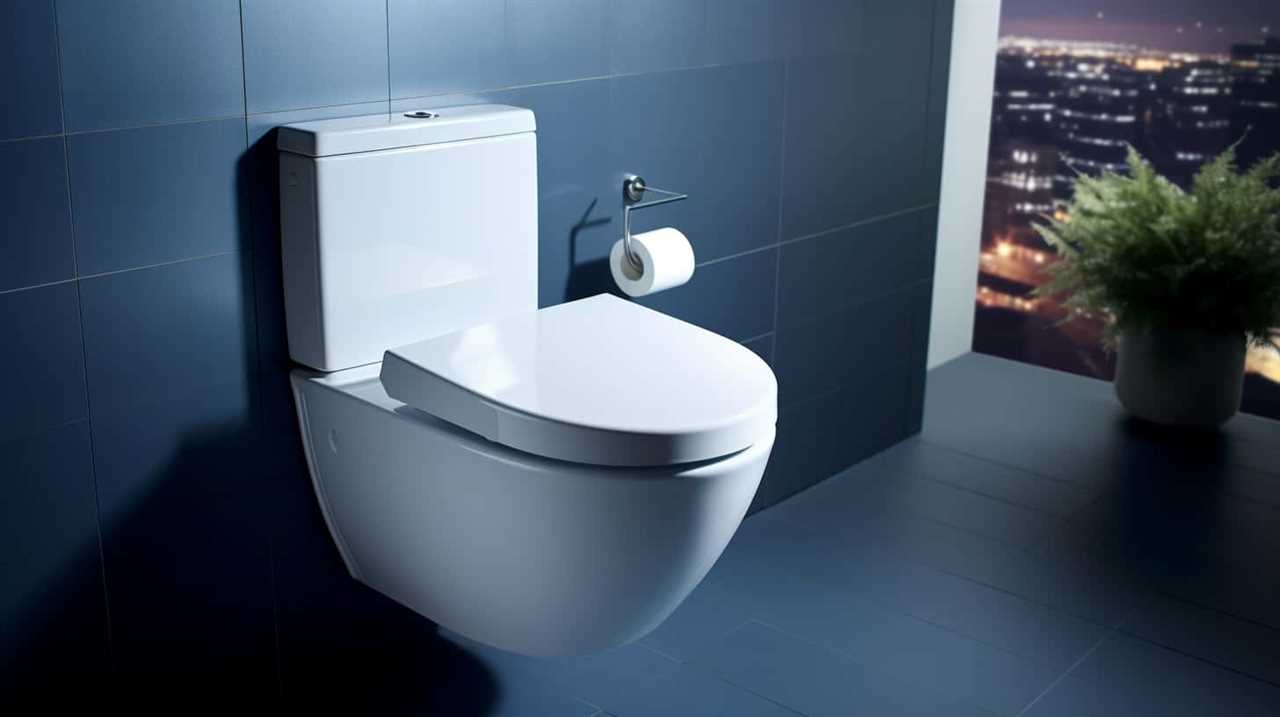
Can Using a Bucket of Water to Flush the Toilet Save Water in Comparison to a Regular Flush?
Yes, using a bucket of water to flush the toilet can save water compared to a regular flush. It is one of the water-saving strategies for toilets. The comparison of water usage between different flushing methods shows significant water conservation potential.
Conclusion
In conclusion, utilizing a bucket of water to flush a toilet can be an effective alternative when faced with a lack of running water. By understanding the concept, gathering the necessary materials, and preparing the bucket of water, one can successfully flush the toilet using this method.
However, it’s important to consider the pros and cons of this approach. On the positive side, using a bucket of water can be a practical solution in certain situations. It can also save water in times of scarcity.
On the other hand, there are some drawbacks to consider. One inconvenience is the need to manually fill the bucket each time, which can take time and effort. Additionally, there is a potential for water spillage during the process, which can be messy and require cleanup.
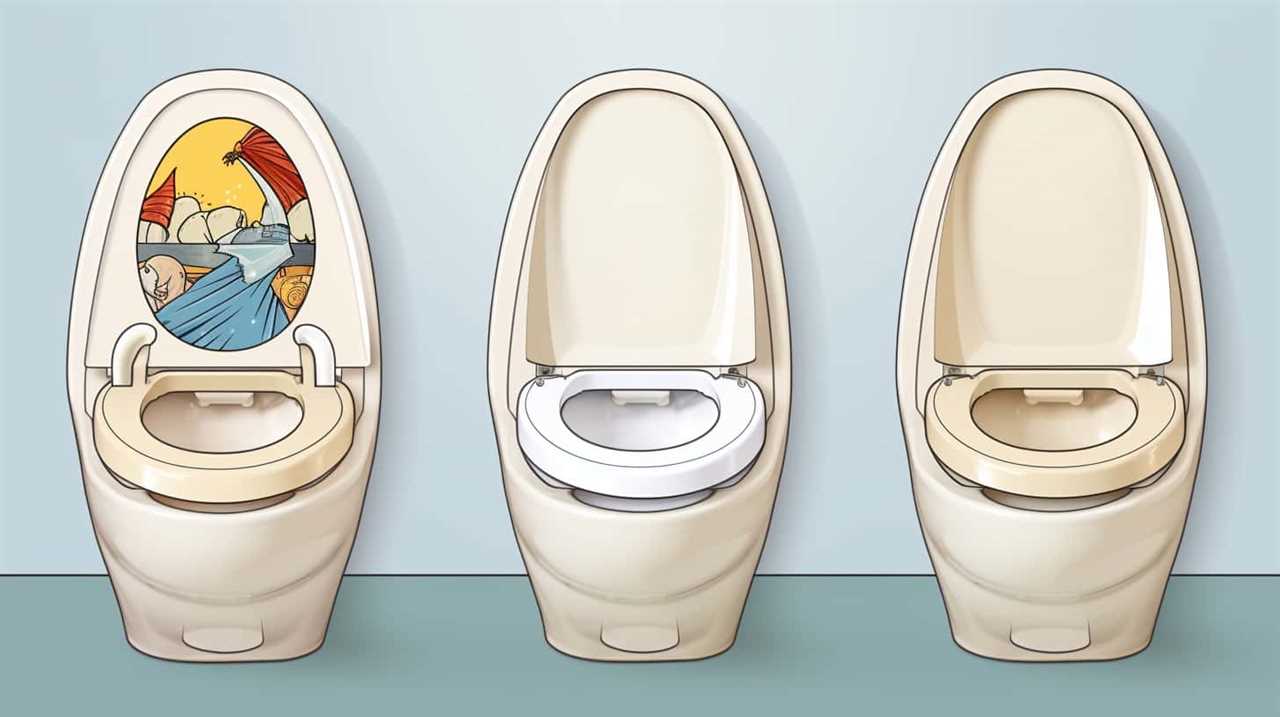
Overall, using a bucket of water can be an effective solution when there is no running water available to flush the toilet. It is important to weigh the pros and cons and consider the specific circumstances before choosing this method.

